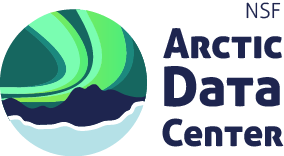General Guidelines
A data management plan describes the data that will be authored and how the data will be managed and made accessible throughout their lifetime. The contents of the data management plan should include:
- the types of data to be authored;
- the standards that would be applied, for example format and metadata content;
- provisions for archiving and preservation;
- access policies and provisions; and
- plans for eventual transition or termination of the data collection in the long-term future.
In January 2011, the National Science Foundation (NSF) added the requirement for a data management plan (DMP) to be included within proposals. Below are some links to relevant pages on the NSF website that highlight data management requirements:
- NSF Grant Proposal Guide
- NSF Dissemination of Research Results
- NSF Geo Data Policies
- NSF Dear Colleague Letter regarding data reporting requirements for the Division of Polar Programs
NSF Arctic Data Center Guidelines
The NSF Arctic Data Center is collaborating with the DMPTool to integrate DMP requirements for Arctic data into an NSF Arctic Data Center template on their online tool.
The presentation slides from the NSF Arctic Data Center’s Polar 2018 Data Management Planning Workshop provide a general tutorial on creating a data management plan using the Arctic Data Center’s DMPTool template.
About the DMP Tool

The DMPTool is a collaboration of multiple institutions and is a service of the UC Curation Center. The DMPTool will help you:
- Create ready-to-use data management plans for specific funding agencies
- Meet funder requirements for data management plans
- Get step-by-step instructions and guidance for your data management plan as you build it
- Learn about resources and services available at your institution to help fulfill the data management requirements of your grant
The DMPTool walks researchers through the steps necessary to create data management plan for one of several funders, including the NSF. You can save, preview and export your plans, as well as share them publicly.
